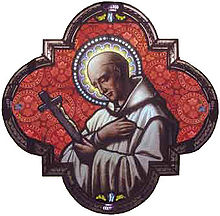Voiron
In the Treaty of Paris (1355) the count exchanged Voiron and the rest of the region between the rivers Rhône and Isère (watered by the Guiers Mort) for Faucigny and Gex from France.
However, the production of canvas continued, and their reputation allowed Voiron to maintain this activity under the First Empire due in large part to purchases by the army.
The nineteenth century saw the decline of the era of canvas in Voiron because of the scarcity of linen and cotton, and because of the disappearance of the sailing navy which had been a large consumer of canvasses.
Voiron also gained religious influence marked by the 1876 erection of the Saint-Bruno church of neo-Gothic style[clarification needed] by a first magistrate.
At the same time, the rise of paper mills on the banks of the Morge, the river crossing the small town, attracted workers to the city.
[clarification needed] However, because of the urban sprawl between Voreppe and Voiron, this town has been considered by the National Institute of Statistics and Economic Studies (INSEE) as belonging to the Grenoble-Alpes Métropole since 2010.
Companies include: Rossignol (skis), Radiall Connections, Antésite (a liquorice-flavored drink), Chartreuse liquor cellars, Bonnat Chocolatier (since 1884), and Allaman (manufacturing and transporting of petrol tanks).
